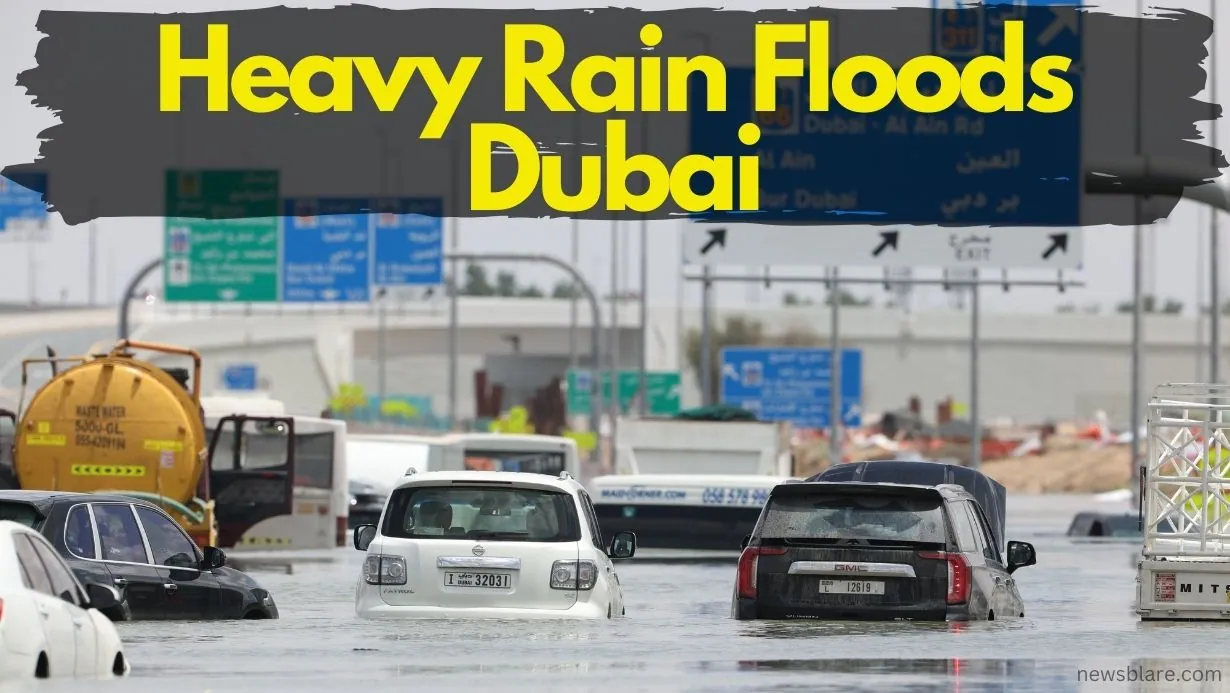One of the top news nowadays, apart from escalating war between Iran and Israel, is the Dubai floods. While many readers want Dubai floods unravelled and want to explore the impact of such disaster on Dubai, there are questions that whether this is a natural disaster or cloud seeding controversy.
United Arab Emirates (UAE) saw floods after the storms dumped more than a year and a half’s rain in a blink of an eye. This flooded roads and international airport situated in metropolis of Dubai. However, neighbouring Oman also saw heavy rains and flooding, killing at least 20 people.
Let us see what actually happened and was it a natural disaster or cloud seeding controversy?
Cloud seeding? What is it?
Before you want Dubai floods unravelled, it is important to understand the phenomenon called as “cloud seeding.”
Cloud seeding refers to a technique which can be used to improve precipitation. As per Desert Research Institute, experts and scientists tend to do this when they put tiny particles known as nuclei in the atmosphere which attach to clouds.
As per the institute, such nuclei offer a base for snowflakes to form. Once cloud seeding takes place, newly formed snowflakes grow and fall from the clouds to the earth’s surface. This increases snowpack and streamflow.
In Middle East, instead of precipitation disguised as snow, their cloud seeding program tends to generate significant amount of rain. The scientists typically do cloud seeding in 2 ways: 1) by utilising generators on the ground or, 2) Distributing nuclei with the help of aircraft.
Speculation continues to take toll on social media platforms as they linked cloud seeding. However, experts believe that record rainfall was mainly because of climate change.
Deluged houses resulted in traffic chaos, trapping people in respective homes in Dubai. Authorities have confirmed that UAE saw heaviest rainfall on record. State-run WAM news agency this “a historic weather event.” They believe that this rainfall exceeded anything documented since the commencement of data collection in 1949. Interestingly, this was before crude oil discovered in Gulf country.
What was the main reason for the rain in Dubai?
The storm targeted Oman on Sunday before devastating the UAE on Tuesday. Initially, the floods knocked out power and caused disruptions to flight movements. Some parts of UAE saw more than 100 mm of rain during Tuesday and Wednesday. This exhibits 75-year record since country started recording rainfall as per National Centre of Meteorology.
The United Arab Emirates (UAE) recorded the heaviest rain ever!!#dubai #HeavyRainfall #dubaimall #DubaiLuxuryClub #dubailuxuryliving #uae #uaelife #unitedemirates #rainfall #heavyrain #HeavyRainfall #heavyrainindubai #HeavyRainfallAlert #storm #Thunderstorms #lightining pic.twitter.com/hwOfioRH7N
— NEWSBLARE (@NewsblareMedia) April 18, 2024
Experts and authorities have shut the media and platforms speculating that cloud seeding was the main reason for the rainfall. Chief scientist at the US National Oceanic and Atmospheric Administration believes that if cloud seeding would have been the main reason, the region would have water all the time. He says that it’s impossible to create rain from thin air per se and see 6 inches of water.
Thus, it is believed that these floods were mainly because of normal weather system. It’s just that weather conditions were exacerbated by climate change. Global warming led to “extraordinarily” warm water in seas flowing around Dubai, where it’s very warm air also.
This leads to increases in both potential evaporation rates along with capacity of atmosphere to hold water. This can result in bigger and larger dumps of rainfall like we have seen in Dubai.
Reports mentioned that intense downpours were due to slow-moving storm which moved throughout Arabian Peninsula and into Gulf of Oman from the previous several days. Such storm led to abundant tropical moisture from near equator and released it over Dubai.
With much of the mystery about Dubai floods unravelled, its important how much region has suffered.
Understanding the impact
In the neighbouring country Oman, minimum of 18 people have died in recent days after heavy floods caused flooding. Dubai airport, which has been categorised as the world’s busiest airport, saw significant disruption. Online departure boards exhibited that there are some arrivals and departures which are either delayed or even cancelled.
Emirates, biggest international airline, announced that it has halted all check-ins for passengers.
⚠️We advise you NOT to come to the airport, unless absolutely necessary.
— DXB (@DXB) April 17, 2024
Flights continue to be delayed and diverted. Please check your flight status directly with your airline.
We are working hard to recover operations as quickly as possible in very challenging conditions.
Hundreds and thousands of cars were seen abandoned on Dubai’s Sheikh Zayed Highway. This is because engines died as water increased around them. As per the UAE’s Interior Ministry massive clean-up remains in process as field work teams are putting their intense efforts to make sure the region sees full recovery.
Read Also: Top 4 Most Abundant Element in the Earth’s Atmosphere
